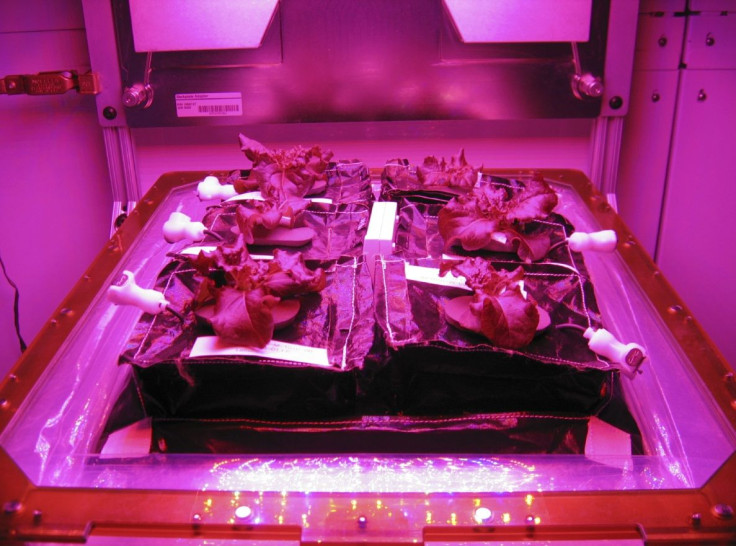NASA ‘Plant Pillows’ Give Astronauts On The International Space Station A Chance To Grow Their Own Veggies

Astronauts, who rarely enjoy fresh food in space, will get the chance to put their green thumbs to the test 220 miles above the Earth’s surface.
NASA is experimenting with growing fresh vegetables aboard the International Space Station, or ISS, using what the space agency calls “plant pillows” -- NASA’s version of an ordinary grow bag commonly preferred by tomato farmers. The goal is to establish a garden aboard the station that would give astronauts a chance to pick their own meals.
NASA announced the fresh food program last month shortly before SpaceX made a delivery to the ISS of 2.5 tons of cargo early Easter morning.
The April payload included a portable pop-up greenhouse for growing things like lettuce. The space agency’s garden program is appropriately nicknamed “Veggie.”
With the plant pillows successfully delivered, astronomers are one step closer to enjoying the first fresh salad in space.
"The ability to grow food in space will become increasingly important in the context of future long-duration space missions, and especially in the context of future human settlements on the moon and Mars," Ian Crawford, a professor of planetary science and astrobiology at Birkbeck, University of London, told the Guardian. "These experiments are an important step in developing this capability."
Growing plants in space has its own unique set of challenges. In zero gravity conditions, seeds don’t remain in the soil, and water pools around the roots which can choke the plants.
Plants in space also have a hard time knowing which way is up and which way is down, meaning they often won’t sprout in the appropriate direction.
NASA’s plant pillows include a base with a reservoir of water that is covered with a permeable fabric. A series of wicks guide the water towards the plants as the water seeps into the soil. The wicks also help to keep the plants growing upright.
The seeds themselves are glued in the correct orientation. A set of LED lights provides the plants with energy.
Two of the NASA plant pillows contain seeds of red romaine lettuce. The third holds zinnia seeds, a flowering plant.
Before astronauts will get to dig in, they’ll have to send the first batch of produce back to Earth for analysis. According to NASA, scientists want to make sure the vegetables are safe to eat.
Previous experiments with growing plants in space were aimed at understanding how zero gravity affects plant growth. The latest experiments are geared toward providing astronauts with a renewable food source.
"Veggie will provide a new resource for U.S. astronauts and researchers as we begin to develop the capabilities of growing fresh produce and other large plants on the space station," Gioia Massa, NASA payload scientist for Veggie, said in a statement. "Determining food safety is one of our primary goals for this validation test."
© Copyright IBTimes 2025. All rights reserved.






















